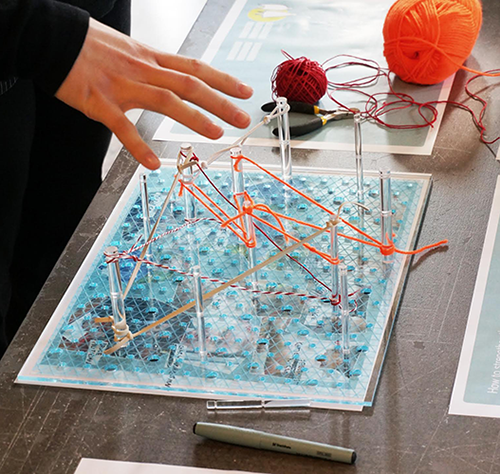Co-designing with relationships in mind
DOI:
https://doi.org/10.7577/formakademisk.1608Keywords:
design for public services, relational welfare, relational services, material thinking, systems oriented design, systems thinking, co-designAbstract
We need to move from object-oriented thinking towards relational thinking for many reasons. As public services become more complex, their design increasingly focuses on the relationships between people. The role of the traditional service staff is shifting from a ‘provider’ to an ‘enabler’ and ‘facilitator’ of relationships between service users, their peers, family or members of the civil service. Many agree that the future of public services relies on relational services, relational welfare and a relational state. Yet we don’t have a shared vocabulary to describe good relationships nor materials to design for services that support meaningful relationships. We visually perceive the world as fragmented parts rather than seeing the connection amongst the parts. This perception is integrated with cognition, therefore when mapping complex systems, nodes are emphasized over their relations in-between. Categorizing and color-coding types of systemic relations are useful to understand but not sufficient to shape complex social relationships. We propose a multi-sensory relational tool that aids public servants, designers and users in understanding social relationships through the use of material properties as new design materials. Testing this tool revealed that people are enabled, within a short timeframe, to create a shared relational vocabulary and use the tool to co-design new service concepts. However, future research needs to address how to move from theory to practice, hence from concepts to prototyping.

Downloads
Published
How to Cite
Issue
Section
License
Authors who publish with this journal agree to the following terms:
- Authors retain copyright and grant the journal right of first publication with the work simultaneously licensed under a Creative Commons Attribution 4.0 License that allows others to share the work with an acknowledgement of the work's authorship and initial publication in this journal.
- Authors are able to enter into separate, additional contractual arrangements for the non-exclusive distribution of the journal's published version of the work (e.g., post it to an institutional repository or publish it in a book), with an acknowledgement of its initial publication in this journal.
- Authors are permitted and encouraged to post their work online (e.g., in institutional repositories or on their website) prior to and during the submission process, as it can lead to productive exchanges, as well as earlier and greater citation of published work (See The Effect of Open Access).
- The author(s) must manage their economic reproduction rights to any third party.
- The journal makes no financial or other compensation for submissions, unless a separate agreement regarding this matter has been made with the author(s).
- The journal is obliged to archive the manuscript (including metadata) in its originally published digital form for at least a suitable amount of time in which the manuscript can be accessed via a long-term archive for digital material, such as in the Norwegian universities’ institutional archives within the framework of the NORA partnership.
The material will be published OpenAccess with a Creative Commons 4.0 License which allows anyone to read, share and adapt the content, even commercially under the licence terms:
This work needs to be appropriately attributed/credited, a link must be provided to the CC-BY 4.0 licence, and changes made need to be indicated in a reasonable manner, but not in any way that suggests that the licensor endorses you or your use.



